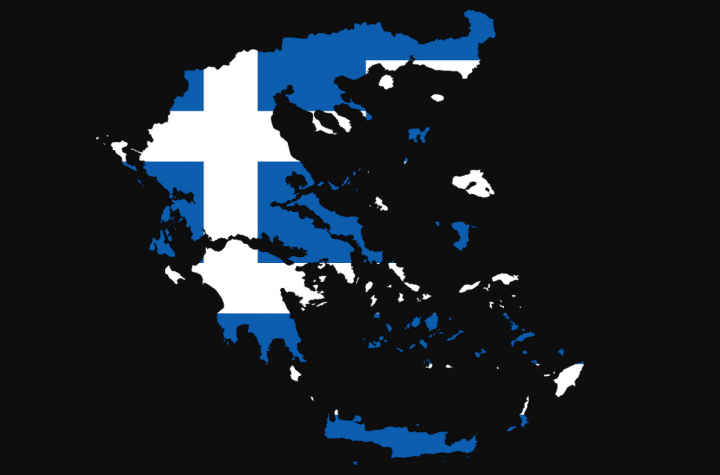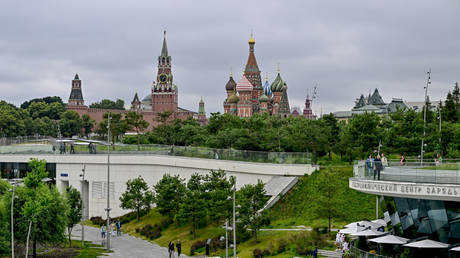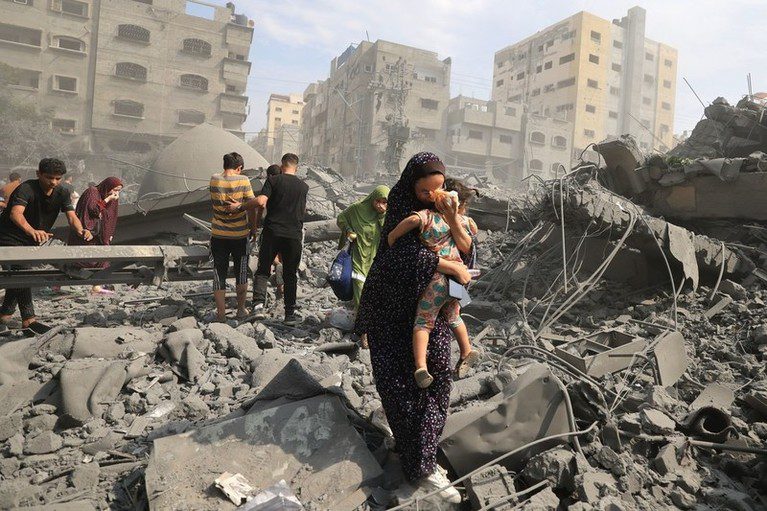
Most of the media is saying that the answer to the crisis in the Euro is for the ECB to print Euros through the purchase of bonds.
It seems to be conventional wisdom that if there is more money in the economy then people will be richer.
That sounds like a nice idea but let me explain briefly why money printing does not make any difference in the long term and why ultimately it makes people worse off.
Imagine a desert island. You have 3 people on the island with nothing except some sand, a palm tree and the sea. They have no possessions, they have no communication with the outside world and they have no chance of ever leaving.

This is a closed economy like the world economy. The world economy is not connected with economies on other planets.
Imagine one day a passing plane dropped a gold bar and a million Euros on the island and one of the islanders found it, would that person be richer than the other people on that island (given the conditions above) ?
Of course it would make no difference to the lot of these 3 people. The gold does not help them build a shelter and the Euros do not help them feed themselves. In a word, the money and the gold is worthless to these people.
Now imagine for a second, instead of gold bar or money being dropped on the island, someone dropped a fishing net on the island and one of the islanders found it.
Would the person who found it be richer than the other islanders?
Of course the answer is yes. The person with the net has much more free time now and can catch enough fish to feed the other two people on the island.

So what has value?
Not money and not gold. Money and gold only have value when they are a representation of a productive asset like a fishing net, a person’s labour or a person’s property. Without the existence of something productive or useful money is worthless.
In other words, it is the productive asset that comes first and money comes later.
Printing money does not create productive assets.
Now if we tie this example in closer to the ECB’s desire to print money.
Imagine for a moment that one person on the island had a fishing net, one person had a boat and one person had a kitchen.
The net owner and boat owner work together to get fish, they then go to the kitchen owner to store and prepare the fish.
They have a small economy going. They found 200 rocks on the island and this is what they use as the currency to buy fish from the person with the net, the person with the net pays the person with the boat in rocks so he takes him out to sea and the person with the kitchen uses rocks to buy the fish from the person with the net and he gets rocks back when he sell the fish to the other 2 people.
This is an awesome video from Bloomberg explaining what is happening in the Eurozone
That is their economy.
Now imagine instead of 200 rocks, the 3 people on this island had 200 Euros.

Now imagine the ECB said to grow the economy on the island they were going to increase the money supply to 300 Euros by giving the money to the person with the kitchen. Lets pretend that the person with the kitchen is the government.
Does that extra 100 Euro make the economy on the island more prosperous?
Well in the short-term you could say yes. All of a sudden the person with the kitchen can afford to buy more fish which he does.
In the short-term the economy on the island is given a boost, the fisherman is making more money and the person with the boat is making more money because the fisherman wants to go out fishing more often.
But what happens in the long-term?
The economy on the island returns to the equilibrium it had before the increased amount of cash distorted the market, the difference being that everything is 50% more expensive than before because there is 50% more currency chasing the same amount of goods and services.
So how is the economy going to grow if more money is not injected it?
Increasing the amount of money is not the way to measure economic growth, if it were then countries with hyperinflation would be the richest and the opposite is true in reality.
What increases prosperity is the increased buying power of the money already in existence.

How does this happen?
Going back to our desert island analogy, the people on the island will make their activities more efficient.
Either they will offer more services to their clients for the same money (increase the quality of life), or they will cut their costs for the same service (they could also increase the quality of their services and increase the price accordingly but they can only do this for so long, when the service gets to a certain expense they risk competitors entering the market and undercutting them).
Lets assume they offer the same service but it costs them less and they charge the same amount of money. By the service costing less it means money is being taking out of circulation (profits being put in the bank) making the money left in circulation more valuable. The money that is taken out of the economy can be used to invest in new projects or the person with the savings can lend it to another person so they can invest in a new project.
They do not need to charge interest on the loan. When they are paid back the principal it will have more buying power meaning they will have profited from the loan due to increased buying power of the money when they get it back and not because of interest.
But I digress from the point of this article.
The very simple point I am trying to make using the simplest example I can think of is that printing money does not make people richer.
Printing money only gives a short-term boost before the economy returns to the pre-money-printing equilibrium.
The problem with money printing in the real world is that it is connected to interest payments which means the cost of increasing the money supply has much bigger negative effects than in the desert island example. In reality the economy returns to the pre-money-printing equilibrium except now the economy has interest payments dragging on the economy
In summary.
Money printing does not make people richer and it does not boost the economy in the long-run, it only has an effect in the short-term.
People only get richer by making their lives more efficient, whether it be by catching the same amount of fish using fewer resources or having a more fuel-efficient car that costs less to buy.
Technology and innovation and the only things that increase people’s wealth.
Printing money does nothing.
As someone once said, if you cannot explain the subject you are talking about in a way that a 5-year-old would understand then chances are you do not understand the subject.
If you disagree with the point I am making in this article feel free to shoot me down, but please do so in terms that a 5-year-old would understand.






Agreed , money is defered barter, to complete the exchange there must be a product.
On the other hand , and this is the counter argument. If the economy shrinks due to lack of investment funds, then there are less products, and so you get price inflation anyway.
“Printing money only gives a short-term boost before the economy returns to the pre-money-printing equilibrium.”
Real data and history shows that the pervasive assumption in economics of equilibrium has little basis in reality. It is a false assumption. That assumption is not shared by most of the public who see a dynamic economics. Dynamic is often a more accurate description of economics.
Economists don’t seem to be willing to part with the often false equilibrium assumptions and false models based on that assumption.
Money printing is not an equilibrium situation. Printing at a % constant rate is dynamic.
Most people don’t realize what I’m about to say. A constant % change increase is exponential; the rate of increase keeps increasing. An example would be putting money in the bank with interest compounding. Compounding is not linear it is exponential. Economic statistics are constantly in the form of percent change. Depositing a lump of gold in year 0 at 2% interest would mean the bank would have to return a piece of gold much larger than the earth. (1+0.02)^2013 [Ounces] divide by 16 to get pounds and compare to eart’s mass. That growth is dynamic and at some point it has to stop.
% rate = (X(2)-X(1))/( x(1) )*100/(1 year) or in calculus (dx/dt)/x
A real constant rate of increase would be a linear line on a graph (with linear scale).
rate of increase= (x(2)-x(1))/(1 year) or in calculus (dx/dt)=C. C is constant for constant increase.
Pyrite – I disagree with your comments regarding equilibrium. George Soros who is the biggest promoter of so called inherent market instability is a text book case showing how stability is impossible in the medium to long term.
Soros has made his fortune going against the market ie going against the trend which he sees as incorrect. In short it is people like Soros that bring stability to the markets. People who see the error of the trend or people who see a bubble are the ones who create medium and long term stability.
It is impossible for there to be long term market instability. That is the same as saying there are no investors who can see opportunities in the market.